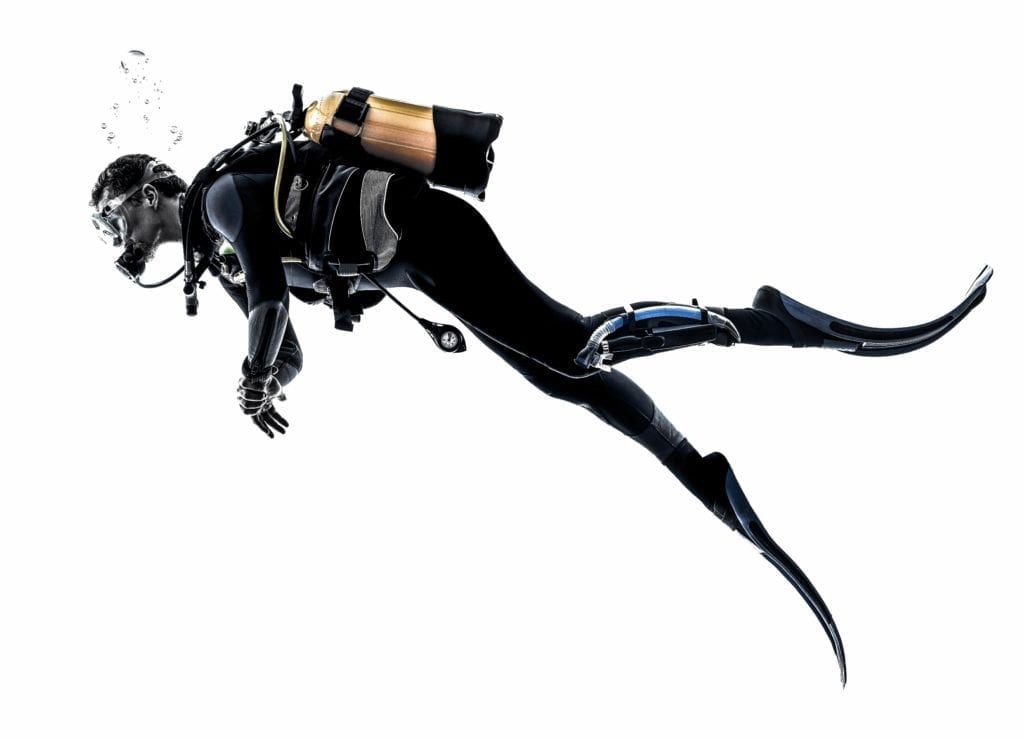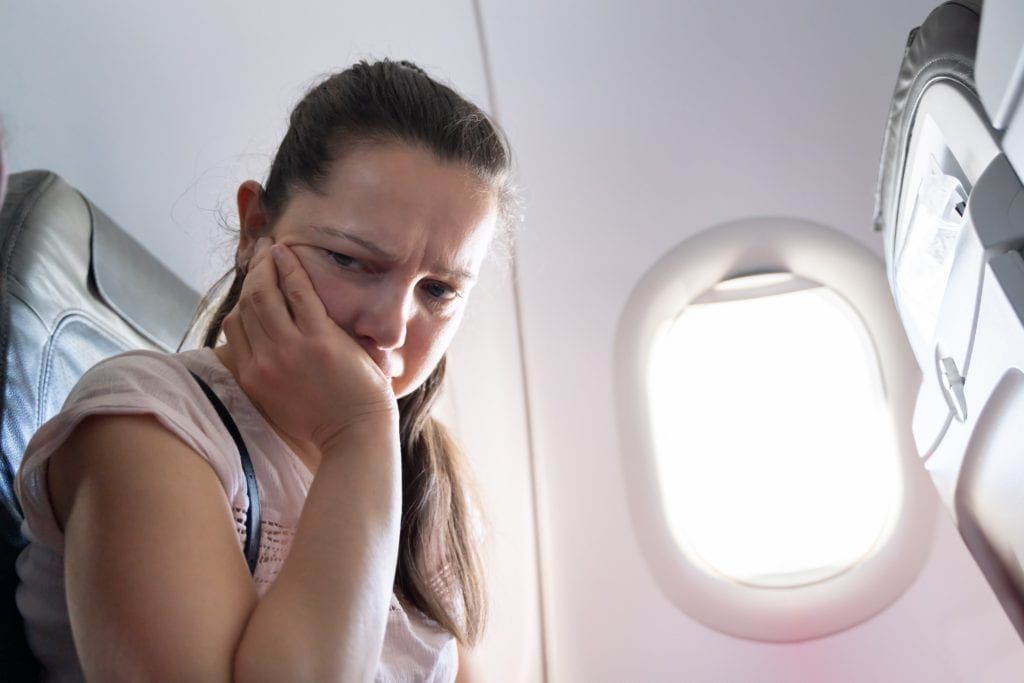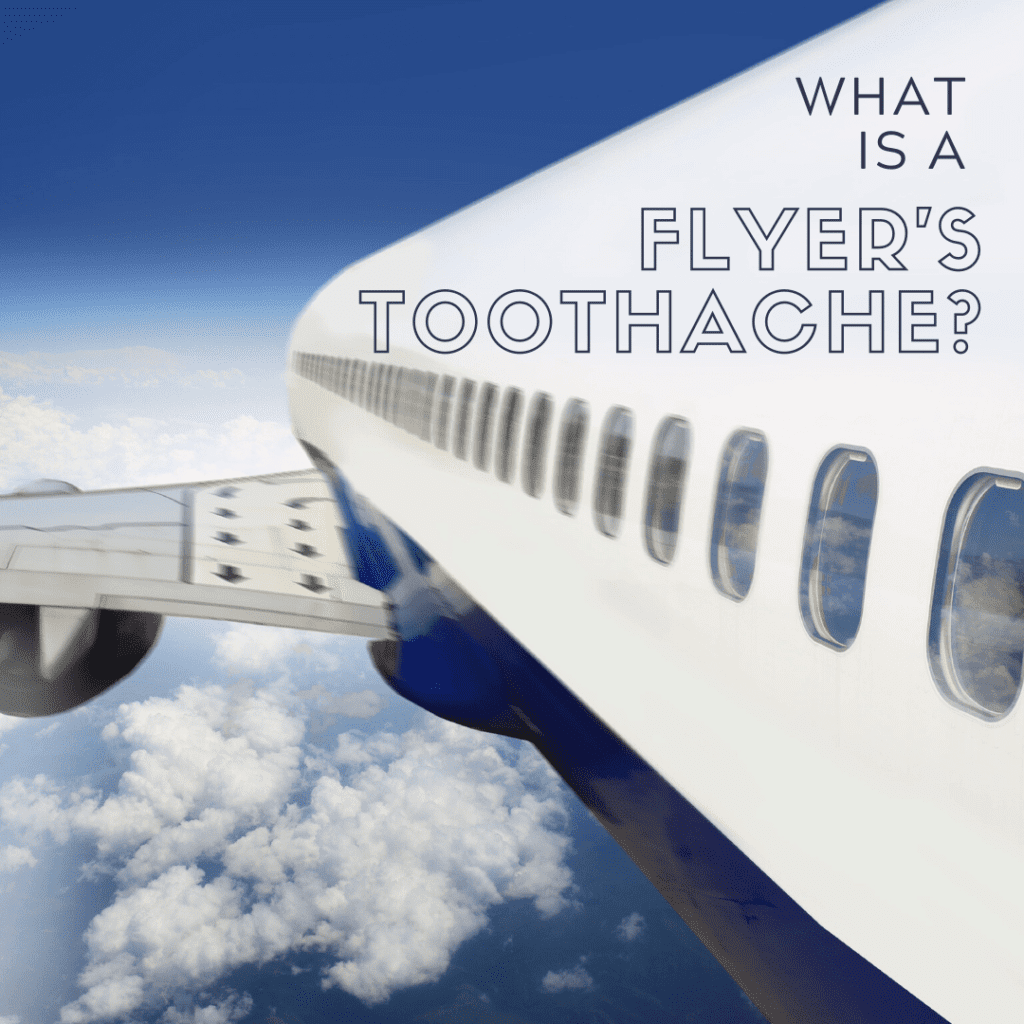If you are a frequent flyer or an underwater diver, you may be familiar with the term ‘flyer’s toothache’. You may have even experienced it yourself at one point or another. A flyer’s toothache is formally known as barodontalgia and is defined as a painful or squeezing sensation that occurs within the tooth while flying or diving.

Tooth pain while flying or diving originates from the change in atmospheric pressure. Most people affected generally experience symptoms starting at 30 feet below sea level or deeper and 9,000 feet above sea level or higher. The condition is most commonly in divers who dive beneath 30 feet, as well as in military pilots due to their constant and rapid change in pressure.
In fact, the condition was first identified in military pilots during the WWII era. At that time, it was known as aerodontalgia because it was thought to only affect those who flew aircraft. However, the same symptoms were eventually discovered in underwater divers. Since this showed that the problem was attributed to a change in atmospheric, or barometric, pressure, the condition was appropriately renamed to barodontalgia. Despite the formal name change, many people continued to refer to the condition as flyer’s toothache.

So, how exactly does a change in barometric pressure affect the teeth and why does it only affect certain people? Well, research has discovered that barodontalgia is actually a symptom, rather than a condition. In fact, experiencing tooth pain while flying or diving can indicate that you have a cracked tooth, faulty restoration, misplaced filling, decay, or an abscess on the tooth root.
When affected by any of these problems, there can be air pockets within the tooth that will expand as pressure decreases during ascent. It is the expansion of these air pockets that can cause tooth pain as well as a sensation of having your tooth squeezed. Since air pockets don’t naturally occur in the teeth, the presence of an air pocket that causes pain can be a sign indicating a dental problem is present.

In some cases, barodontalgia can also be a symptom of sinusitis or barotrauma. Sinusitis is the inflammation of the sinus cavity tissues that can result in tooth pain that can get worse with changes in pressure. Barotrauma is a condition that occurs when the air pocket cannot expand or contract and instead damages the tooth. Barotrauma can cause a filling to be dislodged and can fracture the tooth.
If you have experienced a flyer’s toothache or if you are worried about your oral health, it is recommended to visit your dentist’s office before you fly or dive. Most dentists recommend having any necessary dental work done three days before your flight or dive. This allows enough time for the area to heal and reduces the likelihood of experiencing tooth pain while flying or diving. Additionally, if you do experience tooth pain while flying or diving, you should schedule an appointment with your dentist as soon as possible.

Dr. Michael C. Shuck received his Doctor of Dental Surgery (DDS) degree from the Medical College of Virginia, Cum Laude. He takes part in many volunteer outreach events, including Virginia’s Mission of Mercy project, Virginia Special Olympics, Give Kids a Smile, and the Jamaica Project. Dr. Shuck also is a regular volunteer at Williamsburg’s Olde Towne Medical Center. He actively participates with Virginia’s Donated Dental Service. Dr. Shuck has been a practicing dentist in the Williamsburg, Virginia area since 2007.


